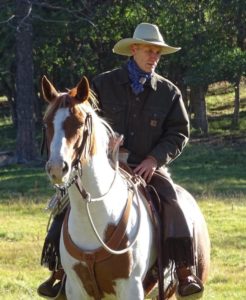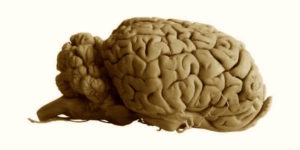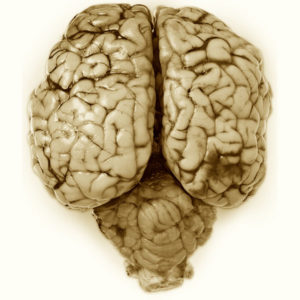Recently, Dr. Steve Peters traveled to Idaho to visit informally with stockmen and livestock researchers from Treasure Valley Community College, Oregon State University, and the University of Idaho. He was introduced by local and international stockman Martin Black. The pair co-authored Evidence-Based Horsemanship.
They will present at the Best Horse Practices Summit.
 The neuropsychologist might be just about the best person around to talk about human and horse brains. Now, he’s considering cow brains, too.
The neuropsychologist might be just about the best person around to talk about human and horse brains. Now, he’s considering cow brains, too.
As Peters mentioned to the gathering:
“Cattle and horses do have brain and sensory differences but also many similarities. What we do know is that horses have to be in a certain neurochemical state within their nervous system to optimize learning. With proper training that area can widen and the horse can chemically ‘down regulate.’ This is not the same concept as desensitization, but it is similar.
“We also know that if set up properly, horses will seek to find comfort (homeostasis) and the resulting dopamine reward. Once the horse knows that you can help it find that

Side view of horse brain
reward, it will seek it out. Horses can learn to learn.
“Often times it’s just a matter of setting it up and not getting in the way,” said Peters.
Dopamine is also the neurotransmitter associated with movement and we know that movement itself can be rewarding. Lots of wrecks are caused by putting too much pressure on an animal when it is constrained and not allowed to move. This can lead to an escalation involving the activation and involvement of stress-related hormones through the HPA (Hypothalamus, Pituitary, Adrenals) axis. In other words, the animal may go from concern to panic.
It’s the activation of the amygdala that influences the hypothalamus to initiate the stress hormone cascade. Read more about the amygdala here.

Top view of cow brain from
Not much learning takes place in this state. If you can take the high road with less stress, then you can bypass the HPA axis and avoid getting a flood of stress-related hormones being dumped into the animal’s nervous system.
Read more about the neurological High Road versus the Low Road.
Read more about Optimal Learning and listen to an interview on the topic with Dr. Peters and Martin Black by becoming a Remuda Reader. Click here.
Very interesting. This should be helpful information to the cattle industry.